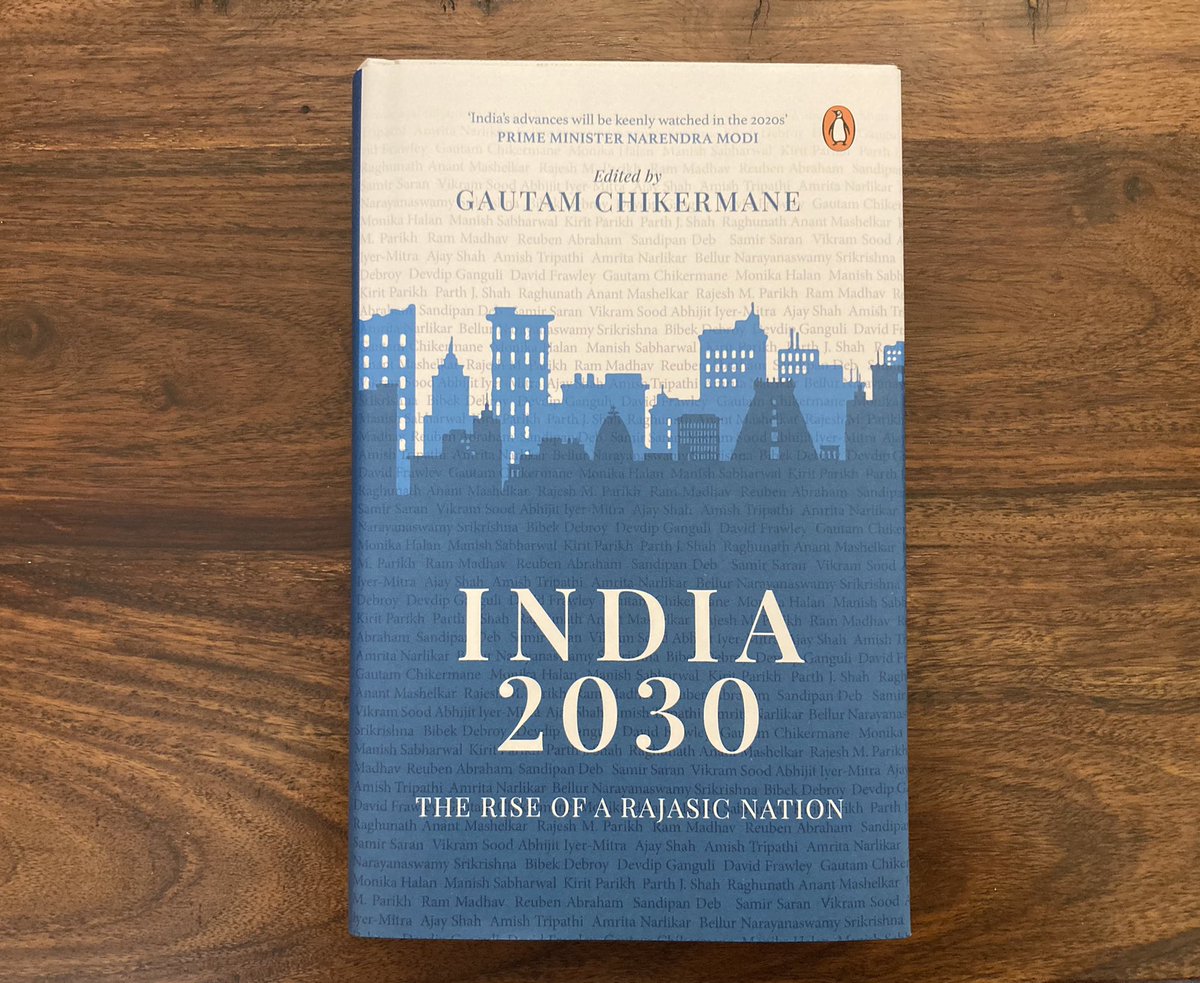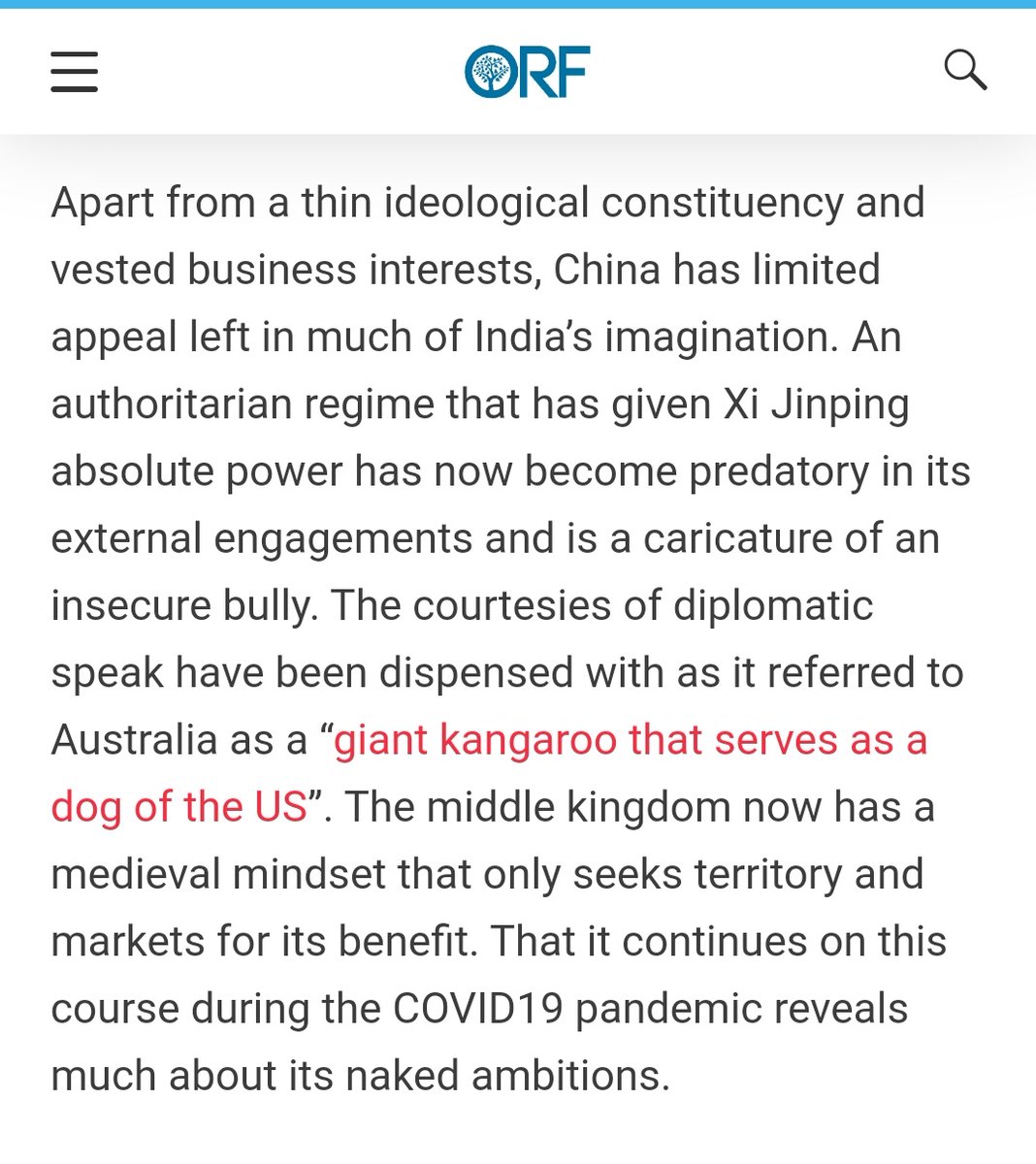
Some readers have been asking what #India2030 is all about.
Here’s a chapter-by-chapter thread on the 20 forecasts by 20 thought leaders on 20 themes that will define India in the 2020s.
1/n
Here’s a chapter-by-chapter thread on the 20 forecasts by 20 thought leaders on 20 themes that will define India in the 2020s.
1/n
https://twitter.com/gchikermane/status/1349282921509650433
Chapter 20 of #India2030 by @davidfrawleyved talks about how the Civilizational Resurgence of India will reconnect its ancient past to ride into a dharmic future
2/n
2/n
Chapter 19 of #India2030 by @devdip tells us what the new idea of Nationalism in the 2020s will be — an integral union of the nation with the self
3/n
3/n
Chapter 18 of #India2030 by @sandipanthedeb examines how ideologies and technologies will intrude into and redefine Friendships
4/n
4/n
Chapter 17 of #India2030 by @authoramish studies the Soft Power of India and says its global influence will be through the confluence of materialism and spiritualism
5/n
5/n
Chapter 16 of #India2030 by @rameshmashelkar on Science and Technology shows how India will be a producer, not merely a consumer, of knowledge
6/n
6/n
Chapter 14 of #India2030 by @parthjshah makes four fantastic forecasts in the field of Education
8/n
8/n
Chapter 13 of #India2030 by Manish Sabharwal looks at what the future of Work will look like
9/n
9/n
Chapter 12 of #India2030 by @nebuer42 tells us what the future of Urbanization (hint: India will thrive in liveable cities)
10/n
10/n
Chatper 11 of #India2030 by @KiritParikh6 defines the contours of Energy and how it will fuel India’s development
11/n
11/n
Chapter 10 of #India2030 by @monikahalan gives us a detailed account of what the future of Money looks like
12/n
12/n
Chapter 9 of #India2030 by @AmritaNarlikar studies how India will engage with Multilateralism — from principles to transactions and back
13/n
13/n
Chapter 8 of #India2030 by @samirsaran on Foreign Policy forecasts that India will be a ‘bridge nation’
14/n
14/n
Chapter 7 of #India2030 by @Vikram_Sood on Spying tells the intelligence fraternity to rethink and reinvent itself to face emerging challenges
15/n
15/n
Chapter 6 of #India2030 by @Iyervval talks about the nine trends that will dominate the Defence sector in the 2020s
16/n
16/n
Chapter 5 of #India2030 by Justice B.N. Srikrishna forecasts that technology will deliver exponential efficiency and a greater accountability
17/n
17/n
Chapter 4 of #India2030 by @bibekdebroy on the Economy sees a fundamental shift from wealth redistribution to wealth creation
18/n
18/n
Chapter 3 of #India2030 by @rammadhavbjp on Politics defines the changing contours of India’s rise to becoming a great power
19/n
19/n
Chapter 2 of #India2030 by @drrajeshmparikh on Health prepares us to look beyond a cultural extinction event
20/n
20/n
Chapter 1 of #India2030 by me (@gchikermane) shows that the rise of India this decade onwards will be driven by a rajasic force
[PS: Don’t forget to pre-order the book, here’s the link
amazon.in/dp/0670094439/…
n/n
[PS: Don’t forget to pre-order the book, here’s the link
amazon.in/dp/0670094439/…
n/n

• • •
Missing some Tweet in this thread? You can try to
force a refresh



